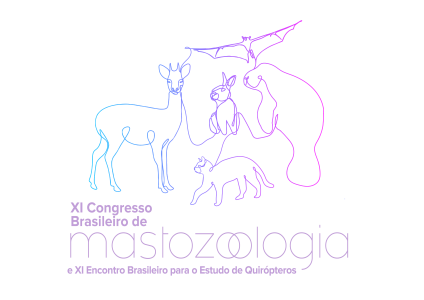Dados do Trabalho
Título:
FOREST PATCHES IN SANTA CATARINA ISLAND: IDENTIFYING LANDSCAPE CONFIGURATION PATTERNS OF MEDIUM-LARGE MAMMALS COMMUNITY DISTRIBUTION
Resumo:
Habitat fragmentation due to urbanization and agricultural expansion has become one of the main causes of natural areas destruction and consequently of biodiversity loss. Today, the world is experiencing one of the biggest waves of urban growth in history. Thus, habitat fragmentation studies are needed to reach a development model more sustainable that guides territorial management taking into account biodiversity impacts and life quality. The landscape anthropic modification has caused the habitats isolation, alteration of ecosystems patterns and processes. In this context, this research, which is part of the Fauna Floripa Project, aims to introduce spatial planning strategies to identify priority areas for conservation and recovery. For this purpose, it will be analyzed how landscape components influence the connectivity within an island - Santa Catarina Island - among nine forest patches from data collected by camera traps of medium (body mass >1kg) and large mammals over the 2019-2022 period. This research is in progress and, using species abundance data from 20 preliminary sampled points, it was analyzed how species are distributed within patches and which landscape configuration variables contribute significantly. The Geographic Information System (GIS) was used to calculate landscape metrics of patch size, perimeter, shape, shortest distance from the centroid to the patch edge (associated with edge effect) and the shortest distance from the edge to the closest patch (associated with permeability) and altitude. Ward cluster analysis was performed to assess how this community is grouping along the patches. It shows that abundance species are grouped into five classes (C = 0.878 and p < 0.01). PERMANOVA analysis gauged that significantly variables to influence abundance data distribution patterns are patch size (p = 0.007), shape (p < 0.001), patch size with shortest distance from the centroid patch (p=0.047) and shape with shortest distance to the closest patch (p=0.008). Also, PCA analysis was performed to assess how these landscape metrics are contributing to species distribution patterns among sites. It results that PC1 explains 55,8% data abundance where the variables associated with patch size features contribute to the formation of this axis, and PC2 explains 20% where the variables associated with connectivity components contribute to the formation of this axis. The north of Santa Catarina island has a more fragmented configuration and less continuous established protected areas (PAs) than the south of the island. The results show one greater split in the grouping of species in the island south, contrasting with four subdivisions in the island north. It suggests a differentiation between smaller and more peripheral PAs (forest patches). Also, 7 and 16 sites are in an urban PA located in the smallest patch (∼151 ha), they are strongly associated with the distance from the edge suggesting an issue associated with the selection of sampling points. While the abundance distribution in 8 and 9 (the largest PA, ∼ 4.678 ha) is strongly associated with the size of the patch. Subsequently, landscape composition variables will be included in order to consider landscape heterogeneity and species-specific fragmentation effects.
Financiamento:
Esse trabalho foi executado através do Projeto Fauna Floripa, parceria entre a Fundação Municipal do Meio Ambiente de Florianópolis (FLORAM), o Instituto do Meio Ambiente de Santa Catarina (IMA-SC) e a Universidade Federal de Santa Catarina (UFSC), e é apoiado pela bolsa de mestrado da Coordenação de Aperfeiçoamento de Pessoal de Nível Superior (CAPES).
Área
Ecologia
Autores
Camila Rezende Ayroza, Barbara Lima Silva, Maurício Eduardo Graipel, Paula Danyelle Ribeiro de Souza, José Salatiel Pires, Manoel dos Santos Filho
